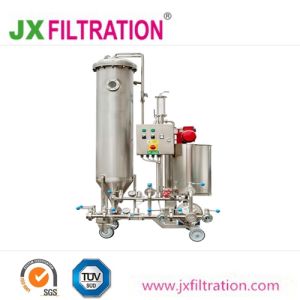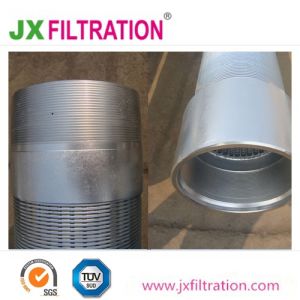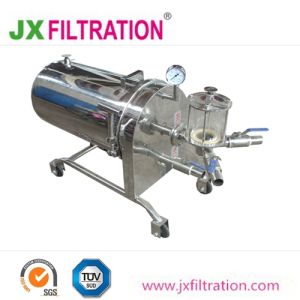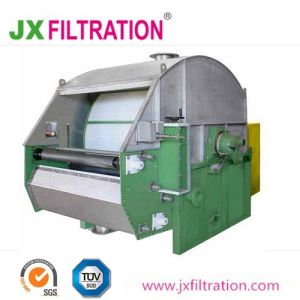------Professional manufacture of filter and filter element since 2004!
------Superior quality products with reasonable price!
------Best pre-sale and after-sale service!
Description
Vacuum Drum Filters
The Vacuum Drum Filters has a broad field of application, amongst others in ore refining, hydrometallurgy, metallurgic, chemical and pharmaceutical industry, food processing and waste water treatment.
A rotary drum vacuum filters (RDVF) is a continuous filter wherein the solid constituent in a pulp or slurry is separated by a porous filter cloth or other media rotated through the pulp or slurry, with vacuum applied to the inner surface to cause the solids to accumulate on the surface as a cake or layer through which the liquid is drawn.
How it works
The process cycle of the RDVF is continuous. Each revolution consists of cake formation, cake washing (if required), drying and cake discharge.
As the drum rotates - partially submerged in the slurry - vacuum draws the liquid through the filter medium (cloth) on the drum surface which retains the solids. The vacuum pulls air (or gas) through the cake and continues to remove liquid as the drum rotates. If required, the cake can be washed prior to final drying and discharge.
Discharge Method
The rotary vacuum filters can discharge its filtered cake by means of any one of several discharge arrangements. Normally a discharge device will be selected based on the process material characteristics and how readily it is released from the filtering media.
Scraper Discharge is the most common drum filter discharge. After dewatering, the cake is removed from the filter cloth by a scraper blade just prior to the re-submergence of the drum. The scraper serves mainly as a deflector to direct the cake, dislodged by an air blowback, into the discharge chute.
Precoat Discharge is best applied to processes which have relatively low concentrations of solids or produce filter cakes which effectively blind the filter media.
Roll Discharge is especially good for thin, sticky cakes which have the unique property of sticking to themselves. The filter cake on the drum is pressed against a discharge roll packed with filter cake so that the thin cake is pulled or peeled from the drum. Solids are removed from the discharge roll with a knife blade.
String Discharge best applies to thin cakes and materials that are unstable and if disturbed too much will change from a solid to a liquid. Most generally applied in the starch and pharmaceutical industries, it is a system of endless strings or wires spaced about 0.5 inches apart that pass around the filter drum but are separated tangentially from the drum at the point of cake discharge. The strings return to the drum surface guided by two rollers with the cake separating from the strings as they pass over the rollers.
Belt Discharge offers the ability to discharge filter cakes and wash both sides of the filter cloth with each drum rotation. Westech Belt Discharge Drum Filters offer the ability to discharge filter cakes and wash the filter media with each drum rotation. Many applications using this type of filter produce thin, sticky and wet filter cakes which are not easily discharged without the aid of a discharge roll.
Features | High speeds and minimal pressure drop Low submergence Superior knife advance system and longer-lasting knife Low maintenance Low power requirements Vacuum is constant around the drum No individual drum sections Adaptive to a wide range of solids High capacity |
| Benefits | No cake cracking No "sloughing off" of cake at beginning of precoat cycle Limited cake expansion and shrinkage Higher filtration rate per square foot of area Thinner precoat cuts Produces drier cake Applications |
| Applications | Metal Hydroxide Waste Gypsum (FDG) Municipal Waste Lime Softening Sludge Potato Waste Corn Gluten Aluminum |
Packaging & Shipping
Packaging
1. All the products are packed in seaworthy wooden cases.
2. Any special requirement for package, please feel free to tell us.
Shipping
JX Filtration offer any delivery method for different quantity.
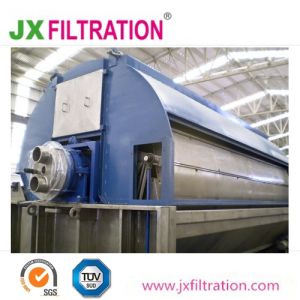
 China
China
